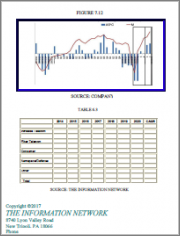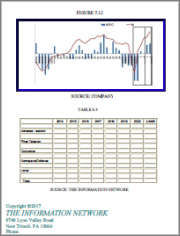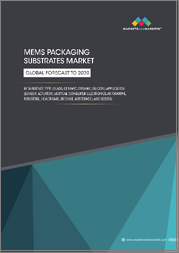
|
시장보고서
상품코드
1473281
3-D TSV : 중요 과제에 관한 인사이트와 시장 분석3-D TSV: Insight On Critical Issues and Market Analyses |
||||||
서론
반도체 산업의 TSV 첨단 포장 부문은 전자기기의 더 높은 연산 능력과 효율성에 대한 수요 증가에 힘입어 현재 빠르게 발전하고 확장하고 있습니다. 다음은 몇 가지 중요한 측면과 인사이트입니다.
첨단 포장의 기술 혁신 : RDL(리와이어링 레이어), TSV(실리콘 관통 전극), 범프 기술, 하이브리드 본딩은 첨단 포장 기술의 최전선에 있습니다. 이들 모두 연결 효율을 높이고 전력 소비를 줄여 칩의 성능을 향상시키는 데 중요한 역할을 하고 있습니다.
이러한 기술은 기존 미세화 방법의 물리적 한계, 특히 양자 터널 효과에 대응하는 기술입니다. 높은 R&D 비용과 낮은 수율로 인해 더 이상의 미세화는 현실적이지 않습니다.
컴퓨팅 성능에 미치는 영향: 고급 포장은 프로세서의 집적도를 높이고 프로세스 메모리 연결의 대역폭과 효율을 향상시켜 컴퓨팅 성능을 크게 향상시킵니다. 이는 '메모리의 벽'과 '전력 소비의 벽'을 극복하고 AI 및 머신러닝 모델과 같은 고급 컴퓨팅 용도을 실현하는 데 필수적입니다.
수요 및 공급의 역학: 첨단 포장에 대한 수요가 공급을 초과하고 있으며, AI 용도의 컴퓨팅 요구사항이 폭발적으로 증가함에 따라 Nvidia와 TSMC와 같은 주요 업체들은 이러한 수요를 충족시키기 위해 고군분투하고 있다, 생산 능력에 큰 병목현상을 보이고 있습니다.
이러한 공급 부족은 기술 발전과 시장 요구에 부응하기 위해 첨단 포장 능력의 확대가 시급하다는 것을 강조하고 있습니다.
시장 장벽 및 업계 동향 : 제조 공정의 복잡성과 정밀도가 요구되는 고급 포장 시장의 진입 장벽이 높기 때문에 종합적인 제조 및 설계 능력을 갖춘 기존 기업이 유리합니다.
세계 주요 기업이 생산 능력을 확장하고 있지만, 확장 주기가 길고 설비 부족으로 인해 어려움을 겪고 있습니다. 이러한 상황은 각 지역의 국내 기업이 발전을 가속화하고 시장 점유율을 확대할 수 있는 기회로 작용하고 있습니다.
향후 전망 : 향후 반도체 산업의 성장을 위해서는 생산능력 확대를 위한 지속적인 노력과 신소재-신기술에 대한 적극적인 연구개발이 필수적입니다.
국내 기업, 특히 반도체 산업에 대한 정부의 강력한 지원이 있는 지역의 기업은 현재 시장 역학을 활용하여 '국내 대체'를 통해 국제 공급업체에 대한 의존도를 낮출 수 있는 절호의 기회를 맞이하고 있습니다.
이 보고서에 대하여
이 보고서는 3D 및 2.5D TSV 기술의 매우 중요한 역할에 초점을 맞추어 반도체 패키징에서 TSV(Through-Silicon Via) 개발 및 확산의 핵심 기술 동향을 종합적으로 검토합니다. 이 보고서는 특히 Chip-on-Wafer-on-Substrate(CoWoS)와 Feveros와 같은 3D 및 2.5D TSV를 통합한 첨단 포장 솔루션에 대해 자세히 설명합니다.
이러한 첨단 포장 기술은 반도체의 성능과 효율의 한계를 넓혀가고 있습니다. 예를 들어 CoWoS는 서로 다른 유형의 칩을 수직으로 쌓아 올려 고밀도 집적화를 가능하게 하여 성능을 크게 향상시키고 전력 소비를 줄일 수 있습니다. 이는 데이터센터나 AI 처리와 같이 높은 컴퓨팅 성능을 필요로 하는 분야에 특히 유용합니다.
이 보고서는 이러한 기술들이 더 넓은 대역폭, 더 짧은 대기 시간, 더 낮은 에너지 소비와 같은 업계의 주요 과제에 어떻게 대응하고 있는지 자세히 살펴봅니다. 또한 기존 스케일링 법칙의 한계를 극복하고 무어의 법칙에 따라 반도체 디바이스의 지속적인 진화를 가능하게 하는 첨단 포장 기법의 전략적 중요성을 강조합니다.
또한 HPC(고성능 컴퓨팅), 소비자 전자제품 및 차량용 시스템 적용으로 인해 3D 및 2.5D TSV 솔루션에 대한 수요가 증가하고 있는 시장 개요를 분석합니다. 이 보고서는 경쟁 구도를 강조하고, 이러한 새로운 비즈니스 기회를 활용하기 위해 업계 주요 기업이 채택하고 있는 기술 발전과 전략에 초점을 맞추었습니다.
목차
제1장 서론
제2장 중요한 과제에 대한 인사이트
- 3D TSV의 촉진요인
- TSV를 사용한 3D IC의 이점
- 비용 효율이 높은 3D 다이 스태킹 기술의 요건
- TSV 기술의 과제
- TSV 공급망의 과제
- 3D 패키지 기술의 한계
- 열관리
- 비용
- 설계의 복잡성
- 납품까지의 시간
제3장 비용 구조
- 3D 칩 스택의 비용 구조
- 소유 비용
제4장 중요한 처리 기술
- 서론
- 구리 도금
- 리소그래피
- 광 리소그래피
- 흔적 리소그래피
- 레지스트 코팅
- 플라즈마 에칭 기술
- 박리/세정
- 박형 웨이퍼 접합
- 웨이퍼 박화/CMP
- 스태킹
- 계측/검사
제5장 중요한 개발 부문의 평가
- 서론
- Via-First
- 기기 요건
- 재료 요건
- Via-Middle
- 기기 요건
- 재료 요건
- Via-Last
- 기기 요건
- 재료 요건
- 인터포저
제6장 진출 기업 개요
- 칩 제조업체/포장 업자/서비스
- 기기 공급업체
- 재료 공급업체
- 연구개발
제7장 시장 분석
- TSV 장비 로드맵
- TSV 장비의 예측
- 설비 예측
- 재료 예측
Introduction
The TSV advanced packaging sector of the semiconductor industry is currently undergoing rapid evolution and expansion, driven by the increasing demand for higher computing power and efficiency in electronic devices. Here are some critical insights and implications based on the information provided:
Technological Innovations in Advanced Packaging: Redistribution Layer (RDL), Through-Silicon Via (TSV), Bump Technology, and Hybrid Bonding are at the forefront of advanced packaging technologies. Each plays a crucial role in enhancing chip performance by improving connection efficiency and reducing power consumption.
These technologies address the physical limitations encountered with traditional scaling methods, notably the quantum tunneling effect, which makes further miniaturization impractical due to high R&D costs and low yield rates.
Impact on Computing Power: Advanced packaging significantly boosts computing power by increasing processor integration and enhancing the bandwidth and efficiency of processormemory connections. This is critical for overcoming the "memory wall" and "power consumption wall," enabling more sophisticated computing applications, including AI and machine learning models.
Supply and Demand Dynamics: The demand for advanced packaging is outstripping supply, partly due to the explosive growth in computing requirements for AI applications. Leading companies like Nvidia and TSMC are struggling to meet this demand, indicating a significant bottleneck in production capacity.
This supply shortage highlights the urgency for expanding advanced packaging capabilities to keep pace with technological advancements and market needs.
Market Barriers and Industry Dynamics: The high barriers to entry in the advanced packaging market, due to the complexity and precision required in manufacturing processes, favor established players with comprehensive fabrication and design capabilities.
While leading global companies are expanding their capacities, the lengthy expansion cycle and equipment shortages present challenges. This situation opens opportunities for domestic companies in various regions to accelerate their development and potentially gain market share.
Future Outlook: The ongoing efforts to expand production capabilities and the active R&D in new materials and techniques are essential for the future growth of the semiconductor industry.
Domestic companies, especially in regions with strong government support for the semiconductor industry, have a unique opportunity to leverage the current market dynamics for "domestic substitution" and reduce reliance on international suppliers.
About This Report
This 175-page report covers the following:
The "3-D TSV: Insight On Critical Issues and Market Analysis" report covers a comprehensive examination of technology trends that are central to the development and deployment of Through-Silicon Via (TSV) in semiconductor packaging, focusing on the pivotal role of 3D and 2.5D TSV technologies. A key highlight of the report is the detailed exploration of advanced packaging solutions that incorporate 3D or 2.5D TSV, such as Chip-on-Wafer-on-Substrate (CoWoS) and Feveros.
These advanced packaging technologies are pushing the boundaries of semiconductor performance and efficiency. CoWoS, for instance, enables high-density integration of heterogeneous chips by stacking them vertically, significantly improving performance and reducing power consumption. This is particularly beneficial for applications requiring high computational power, like data centers and AI processing. Feveros, although not detailed in your initial information, can be inferred as another innovative packaging solution leveraging 3D or 2.5D TSV technologies to meet the growing demands for faster, more efficient computing across various sectors.
The report delves into how these technologies address critical industry challenges, including the need for greater bandwidth, reduced latency, and lower energy consumption. It emphasizes the strategic importance of these advanced packaging methods in overcoming the limitations of traditional scaling laws, thus enabling the continued evolution of semiconductor devices in line with Moore's Law.
Moreover, the analysis presents a market overview that reflects the growing demand for 3D and 2.5D TSV solutions, driven by their application in high-performance computing, consumer electronics, and automotive systems. The report underscores the competitive landscape, highlighting the technological advancements and strategies employed by key industry players to capitalize on these emerging opportunities.
Table of Contents
Chapter 1. Introduction
Chapter 2. Insight Into Critical Issues
- 2.1. Driving Forces In 3-D TSV
- 2.2. Benefits of 3-D ICs With TSVs
- 2.3. Requirements For A Cost Effective 3-D Die Stacking Technology
- 2.4. TSV Technology Challenges
- 2.5. TSV Supply Chain Challenge
- 2.6. Limitations of 3-D Packaging Technology
- 2.6.1. Thermal Management
- 2.6.2. Cost
- 2.6.3. Design Complexity
- 2.6.4. Time to Delivery
Chapter 3. Cost Structure
- 3.1. Cost Structure of 3-D chip Stacks
- 3.2. Cost of Ownership
Chapter 4. Critical Processing Technologies
- 4.1. Introduction
- 4.2. Cu Plating
- 4.3. Lithography
- 4.3.1. Optical Lithography
- 4.3.2. Imprint Lithography
- 4.3.3. Resist Coat
- 4.4. Plasma Etch Technology
- 4.5. Stripping/Cleaning
- 4.6. Thin Wafer Bonding
- 4.7. Wafer Thinning/CMP
- 4.8. Stacking
- 4.9. Metrology/Inspection
Chapter 5. Evaluation Of Critical Development Segments
- 5.1. Introduction
- 5.2. Via-first
- 5.2.1. Equipment Requirements
- 5.2.2. Material Requirements
- 5.3. Via-Middle
- 5.3.1. Equipment Requirements
- 5.3.2. Material Requirements
- 5.4. Via-Last
- 5.4.1. Equipment Requirements
- 5.4.2. Material Requirements
- 5.5. Interposers
Chapter 6. Profiles Of Participants
- 6.1. Chip Manufacturers/Packaging Houses/Services
- 6.2. Equipment Suppliers
- 6.3. Material Suppliers
- 6.4. R&D
Chapter 7. Market Analysis
- 7.1. TSV Device Roadmap
- 7.2. TSV Device Forecast
- 7.3. Equipment Forecast
- 7.4. Material Forecast



















